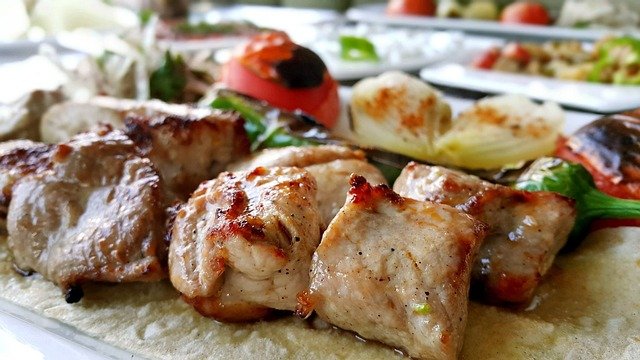Savoring the Spice: A Deep Dive into Jamaican Jerk Cuisine
Embark on a flavorful journey to the Caribbean as we explore the tantalizing world of Jamaican jerk cuisine. This iconic cooking style, known for its fiery heat and complex flavors, has captivated taste buds worldwide. From its humble beginnings to its modern interpretations, jerk cuisine offers a unique culinary experience that's both deeply rooted in tradition and constantly evolving.

The term “jerk” itself is believed to come from the Spanish word “charqui,” meaning dried meat, which eventually became “jerky” in English. However, Jamaican jerk is far from being just dried meat. It’s a complex culinary tradition that has been passed down through generations, each adding their own twist to the recipe while maintaining its core essence.
Today, jerk cuisine has become synonymous with Jamaican culture, representing not just a way of cooking, but a celebration of resilience, creativity, and the island’s rich history.
The Art of the Jerk Rub: Spices that Ignite the Senses
At the heart of jerk cuisine lies the all-important jerk rub or marinade. This potent blend of spices and herbs is what gives jerk its distinctive flavor profile. While recipes can vary, there are a few key ingredients that form the backbone of any authentic jerk seasoning:
-
Scotch Bonnet Peppers: These fiery little peppers are what give jerk its signature heat. They’re not just about spice though; Scotch Bonnets also impart a unique fruity flavor that’s essential to the jerk taste.
-
Allspice: Also known as pimento, this spice is crucial in jerk seasoning. Its warm, sweet flavor provides depth and complexity to the mix.
-
Thyme: This herb adds an earthy, slightly minty note that balances out the heat and spice.
-
Green Onions: Also called scallions, these provide a fresh, pungent flavor that complements the other ingredients.
-
Garlic: A staple in many cuisines, garlic adds a savory depth to the jerk seasoning.
Other common ingredients include ginger, nutmeg, brown sugar, and soy sauce. The exact proportions and additional ingredients often vary from recipe to recipe, with each chef or family having their own secret blend.
Beyond Chicken: Exploring Jerk’s Versatility
While jerk chicken might be the most well-known jerk dish, this cooking style is incredibly versatile and can be applied to a wide range of ingredients. Traditionalists often use pork, which was the original meat of choice for the Maroons. However, modern jerk cuisine has expanded to include:
-
Seafood: Jerk shrimp, fish, and even lobster offer a delightful fusion of spicy heat and oceanic flavors.
-
Vegetables: Jerk seasoning can transform humble veggies into exciting dishes. Jerk corn on the cob, for instance, is a popular street food in Jamaica.
-
Tofu and Seitan: For vegetarians and vegans, jerk-seasoned plant-based proteins can provide a satisfying alternative to meat dishes.
-
Fruits: Believe it or not, jerk seasoning can even be used on fruits. Grilled jerk pineapple is a sweet and spicy treat that perfectly encapsulates the tropical flavors of Jamaica.
This adaptability has allowed jerk cuisine to spread beyond Jamaica’s shores, inspiring chefs worldwide to incorporate its bold flavors into fusion dishes and modern interpretations.
The Perfect Pair: Beverages that Complement Jerk
No discussion of jerk cuisine would be complete without mentioning the beverages that best accompany these spicy delights. The right drink can enhance the flavors of jerk and provide relief from its heat. Here are some popular pairings:
-
Red Stripe Beer: This Jamaican lager is a classic choice. Its crisp, light flavor helps cleanse the palate between bites of spicy jerk.
-
Rum Punch: A fruity rum punch can complement the complex flavors of jerk while providing a cooling contrast to its heat.
-
Coconut Water: For a non-alcoholic option, fresh coconut water is both refreshing and hydrating, making it perfect for countering the spiciness of jerk dishes.
-
Sorrel: This traditional Jamaican drink, made from hibiscus flowers, offers a tart and refreshing counterpoint to jerk’s bold flavors.
-
Ginger Beer: The spicy kick of ginger beer can stand up to the heat of jerk while adding its own layer of complexity to the meal.
Remember, the key is to find a balance between the intense flavors of the jerk and the refreshing qualities of the beverage.
Jerk in the Modern Kitchen: Tips for Home Cooks
Bringing the flavors of Jamaican jerk to your own kitchen might seem daunting, but with a few tips, you can create authentic jerk dishes at home:
• Start with a good jerk seasoning. While making your own is ideal, there are quality store-bought options available.
• Marinate your protein (or vegetables) for at least 4 hours, preferably overnight, to allow the flavors to penetrate deeply.
• For an authentic touch, grill your jerk dishes over pimento wood. If unavailable, regular wood chips soaked in water and allspice berries can provide a similar effect.
• Don’t rush the cooking process. Jerk is best when cooked low and slow, allowing the flavors to develop and the meat to become tender.
• Experiment with different proteins and vegetables to find your favorite jerk combinations.
• Remember that jerk is meant to be spicy. While you can adjust the heat level, some spiciness is integral to the authentic jerk experience.
• Serve your jerk dishes with traditional Jamaican sides like rice and peas, festival (a type of fried dumpling), or grilled plantains for a complete meal.
In conclusion, Jamaican jerk cuisine offers a thrilling culinary adventure that goes far beyond mere spiciness. Its rich history, complex flavors, and adaptability make it a standout in the world of global cuisines. Whether you’re sampling jerk dishes in a Jamaican beach shack or recreating them in your own kitchen, each bite is a celebration of flavor, history, and culinary artistry. So fire up the grill, embrace the heat, and let the bold flavors of jerk transport you to the sun-soaked shores of Jamaica.





